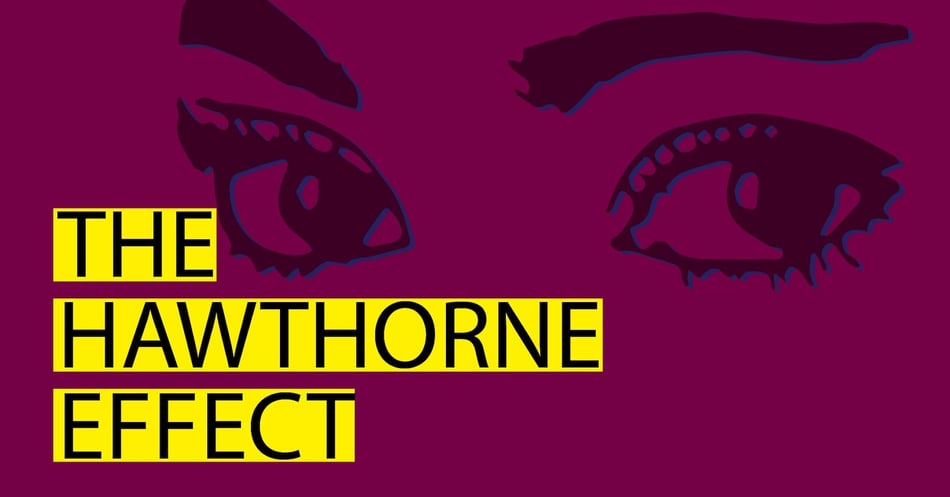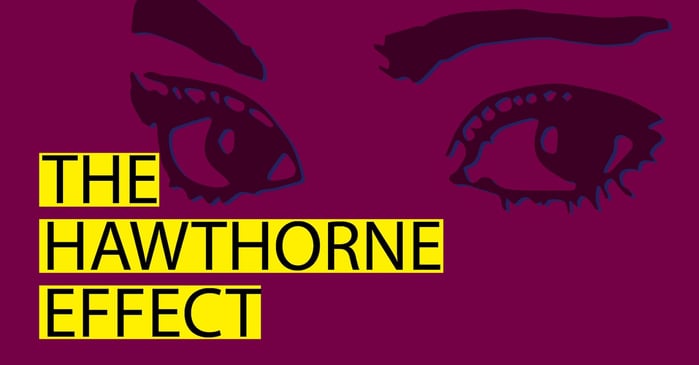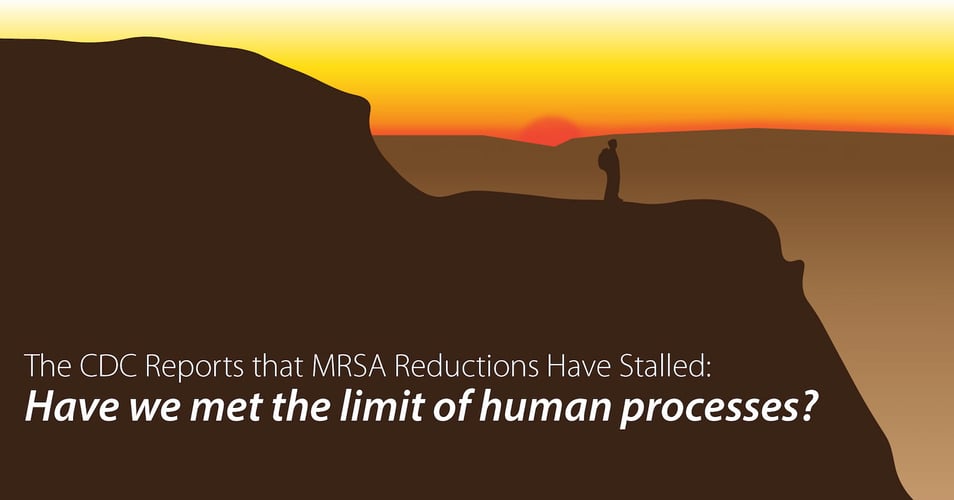The Hawthorne Effect: What happens when no one's watching?

 In the 1920’s and 30’s, the nation was swept up in the Efficiency Movement, an effort to rid every aspect of human life of waste and unproductive activity. Researchers were dispatched to factory floors, classrooms, and even family living rooms with the mission of finding the optimal formula for efficient and productive work, a formula supported by the new excitement over science and experimentation. Within this context, a study was conducted at the Hawthorne Works, a factory making telephone equipment for Western Electric, to determine the optimal illumination level for worker productivity. These experiments went on for eight years, and ended with little fanfare. Decades later, however, Henry A. Landsberger revisited these studies, discovering a pattern that revealed more about human nature than about workplace illumination. This pattern still impacts research today, where it is known as the Hawthone effect.
In the 1920’s and 30’s, the nation was swept up in the Efficiency Movement, an effort to rid every aspect of human life of waste and unproductive activity. Researchers were dispatched to factory floors, classrooms, and even family living rooms with the mission of finding the optimal formula for efficient and productive work, a formula supported by the new excitement over science and experimentation. Within this context, a study was conducted at the Hawthorne Works, a factory making telephone equipment for Western Electric, to determine the optimal illumination level for worker productivity. These experiments went on for eight years, and ended with little fanfare. Decades later, however, Henry A. Landsberger revisited these studies, discovering a pattern that revealed more about human nature than about workplace illumination. This pattern still impacts research today, where it is known as the Hawthone effect.
What Landsberger discovered was that productivity increased for a short time any time the lighting was changed. And any time a new cleaning regimen was introduced. And any time workstations were relocated. In fact, productivity improved any time researchers were present, measuring productivity. And thus was born the Hawthorne Effect, the tendency for experiment participants to change their behavior when they realize they are being observed. Also called the observer effect, this response is similar to the demand effect, when experiment participants adjust behavior in a way they believe will please the researcher. But what does this say about human nature, and how does this impact research in infection control?
Very simply, the Hawthorn effect means that people – doctors, nurses, patients, visitors – tend to behave differently when they believe they are being observed. Researchers must take this into consideration as they design their studies, building in elements to try to avoid this type of bias. But healthcare workers in the field must also take this into consideration when adopting new interventions, from new handwashing protocols, to daily chlorhexidine baths, to safer injection practices. We need to remember that we, as human beings, tend to behave as required when under observation, but return to old behavior when that observation is not present.
One study demonstrated the Hawthorne Effect clearly in the case of antiseptic hand rub, where researchers saw a 55% increase in compliance when healthcare workers were re-educated and made aware of being observed. Other studies have shown the same result with hand sanitizer dispensers located within eyeshot of an auditor vs. those that were not. Additionally the gradual “decay” or decline in the desired behavior has been demonstrated in other areas of health care, including injection safety, environmental cleaning, patient care, and on and on.
There are some interventions that can prevent this decay in desired behavior. One researcher, Dr. Peter Pronovost of Johns Hopkins Hospital, has demonstrated that the use of checklists help healthcare workers remember and complete correct protocols from handwashing to surgical procedures, prompting him to create the mobile app Doctella to help patients and doctors prevent errors. Dr. Sanjay Saint of the University of Michigan speaks to how group pressures of observation could be the way to changing behaviors in healthcare settings. Other technologies work to provide backup to lapses in human processes such as biocidal materials and electronic handwashing trackers.
We have all experienced the Hawthorne effect in our daily lives. We sit a little straighter at our desks as the boss walks by, or use a reusable shopping bag at the organic grocery store. The idea has even entered our aphorisms, with many phrases capturing the idea of being good whether or not someone is watching. There is progress being made in ensuring that we are doing the right thing in healthcare, but there is always room for improvement. The first step is acknowledging that this is a well-documented aspect of human behavior, and then finding innovative ways to get us to all do the right thing, even when no one is watching.
Editor's Note: This post was originally published in August 2016 and has been updated for freshness, accuracy and comprehensiveness.
![EOScu Logo - Dark - Outlined [07182023]-01](https://blog.eoscu.com/hubfs/Eoscu_June2024/Images/EOScu%20Logo%20-%20Dark%20-%20Outlined%20%5B07182023%5D-01.svg)




